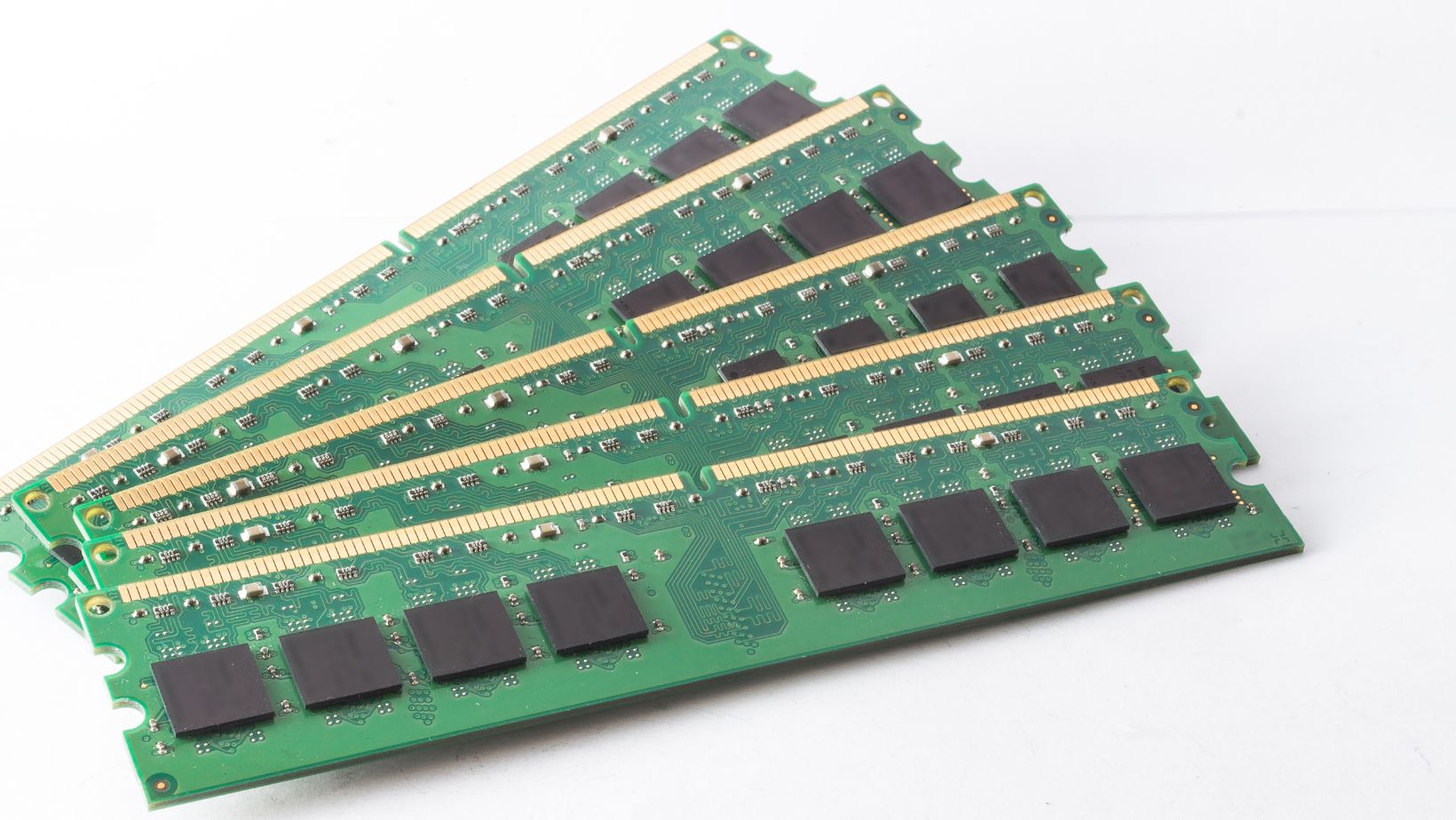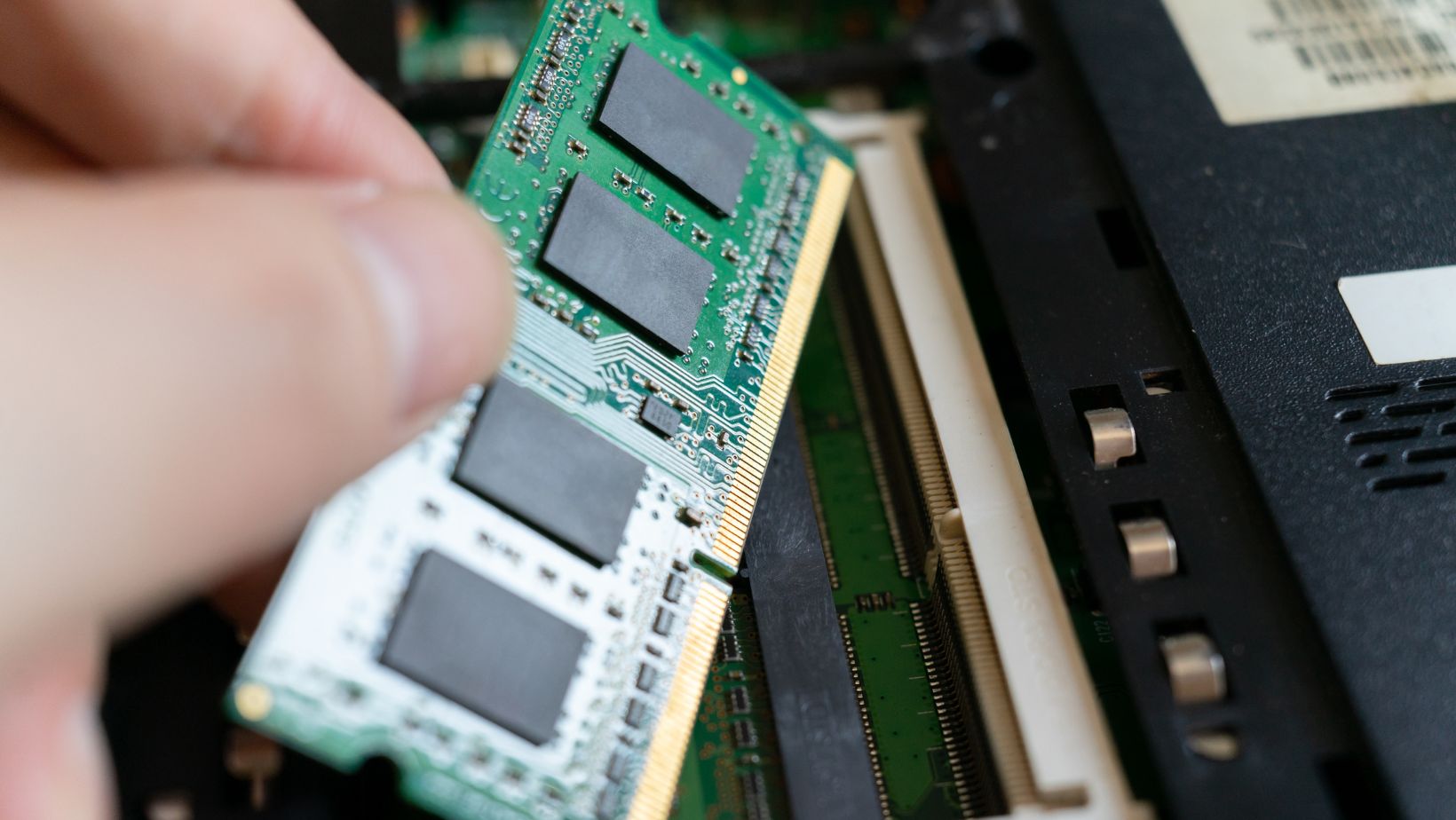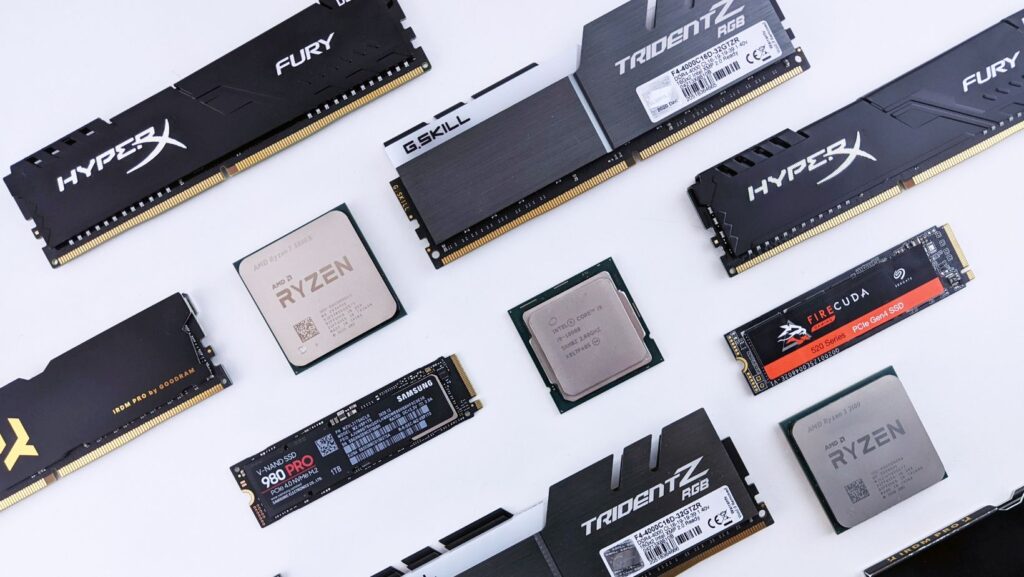As technology continues to evolve rapidly, so does the demand for faster, more efficient memory solutions. Random Access Memory (RAM) is at the heart of this transformation, and the next generation of RAM, including DDR5 and LPDDR6, is set to revolutionize computing performance. Together with the team of https://jugabet.cl/es/football/live, we dive into the latest developments in RAM technology, explore the features and benefits of DDR5 and LPDDR6, and take a closer look at what the future of memory innovation holds. From gaming and high-performance computing to mobile devices and data centers, these new RAM technologies promise to improve speed, power efficiency, and overall system performance.
Evolution of RAM Technology
The journey of RAM technology is a fascinating narrative that mirrors the rapid advancements in computer systems. From the early days of static RAM (SRAM) and dynamic RAM (DRAM) to the more sophisticated variations we see today, each generation has brought forth remarkable improvements. The transition from DDR (Double Data Rate) to DDR2, DDR3, and DDR4 has been characterized by significant enhancements in speed, capacity, and energy efficiency. Each iteration has not only allowed for faster data transfer rates but also enabled computers to handle increasingly complex tasks with ease.
As we look at the evolution of RAM technology, it is essential to acknowledge the role that increasing demands for performance play. The explosion of data-intensive applications, such as artificial intelligence, machine learning, and high-resolution gaming, has necessitated memory solutions that can keep pace with the processing power of modern CPUs and GPUs. This need for speed and efficiency has laid the groundwork for the introduction of DDR5 and LPDDR6, which promise to address these challenges head-on by delivering unprecedented performance enhancements.
The evolution of RAM has not only focused on speed and capacity but also on power efficiency. In an age where sustainability and energy consumption are critical considerations, RAM manufacturers are making strides to reduce power draw without sacrificing performance. The introduction of low-power variants, such as LPDDR, has allowed mobile devices and laptops to operate longer on a single charge, thus enhancing user experience without compromising performance. As we continue to advance into the future of RAM technology, these considerations will remain at the forefront of innovation.
LPDDR6 – The Next Generation of Mobile RAM
LPDDR6, or Low Power Double Data Rate 6, represents the latest evolution in mobile memory technology, designed explicitly for smartphones, tablets, and other portable devices. With the rapid growth of mobile computing, the demand for efficient and powerful memory solutions has never been higher. LPDDR6 aims to meet these needs by providing enhanced performance while minimizing energy consumption. Early benchmarks suggest that LPDDR6 can offer data transfer rates of up to 6400 MT/s, significantly surpassing its predecessor, LPDDR5, which maxed out at 5500 MT/s.
One of the standout features of LPDDR6 is its ability to operate at lower voltages, which directly contributes to increased battery life for mobile devices. By reducing the operating voltage to as low as 1.1 volts, LPDDR6 ensures that devices can run longer without needing frequent recharges. This is particularly beneficial for high-performance tasks such as gaming, video streaming, or running resource-intensive applications, where users often find themselves pushing their devices to the limits. The efficiency gains provided by LPDDR6 will likely lead to a new generation of devices that are not only faster but also more energy-efficient.
Moreover, LPDDR6 introduces several architectural improvements, such as enhanced error correction and increased data bandwidth. These advancements ensure that mobile devices can handle multitasking and demanding applications more efficiently than ever before. As more consumers rely on their smartphones and tablets for professional and personal use, the importance of robust memory solutions becomes paramount. LPDDR6 is poised to meet these expectations, heralding a new era of mobile computing that delivers both speed and efficiency.
Comparison between DDR5 and LPDDR6
When comparing DDR5 and LPDDR6, it’s crucial to understand their target markets and use cases. DDR5 is primarily designed for desktops, laptops, and servers, focusing on delivering high bandwidth and capacity for demanding applications. In contrast, LPDDR6 is optimized for mobile devices, prioritizing low power consumption and efficiency to enhance battery life. Despite these differences, both technologies share a common goal: to push the boundaries of performance and efficiency in their respective fields.
DDR5 boasts impressive specifications, with data rates ranging from 4800 MT/s to over 8400 MT/s, making it suitable for high-performance applications like gaming, 3D rendering, and data analysis. The increased capacity per module allows for configurations of up to 128GB, which is particularly beneficial for power users and professionals who require substantial memory for multitasking and resource-intensive tasks. Additionally, DDR5 features improved burst lengths and better bandwidth utilization, resulting in a more efficient data transfer process.
On the other hand, LPDDR6, with its focus on mobile applications, offers lower latencies and power requirements, making it ideal for smartphones and tablets. While the maximum data rate may not match that of DDR5, the efficiency gains and lower voltage operation allow mobile devices to perform exceptionally well under demanding conditions. The choice between DDR5 and LPDDR6 ultimately depends on the intended use case, with DDR5 excelling in high-performance computing environments and LPDDR6 leading the charge in mobile efficiency.
Advantages of DDR5 and LPDDR6
The advent of DDR5 and LPDDR6 comes with a multitude of advantages that are set to transform the computing landscape. For DDR5, one of the most significant benefits is its increased data transfer speeds. With maximum speeds reaching up to 8400 MT/s, DDR5 enables faster communication between the CPU and memory, which translates to improved overall system performance. This is particularly beneficial for gaming enthusiasts and professionals in fields such as video editing and 3D modeling, where every millisecond counts.

Moreover, DDR5 introduces advanced features such as on-die ECC (Error Correction Code), which enhances data integrity and reliability. This feature is crucial for applications that rely on large datasets, where even minor errors can lead to significant issues. By incorporating error correction directly into the memory module, DDR5 ensures that data remains accurate and stable, providing users with peace of mind and reducing the risk of data corruption.
LPDDR6, on the other hand, brings its own set of advantages, particularly in the realm of mobile computing. Its efficiency-focused design leads to lower power consumption, which is essential for extending battery life in smartphones and tablets. The benefits of LPDDR6’s low-voltage operation cannot be overstated; users can enjoy high performance without the constant need to recharge their devices. Additionally, LPDDR6’s advanced architecture allows for seamless multitasking and smooth performance even when running multiple applications simultaneously, catering to the ever-increasing demands of mobile users.
Impact of DDR5 and LPDDR6 on Gaming and Multimedia
The gaming and multimedia industries stand to benefit immensely from the introduction of DDR5 and LPDDR6. As game developers push the envelope with more graphically intensive titles and immersive experiences, the demand for memory that can keep up with these advancements is critical. DDR5, with its impressive bandwidth and capacity, allows for richer graphics, faster load times, and an overall smoother gaming experience. Gamers equipped with DDR5 RAM will find themselves immersed in worlds that are more detailed and responsive than ever before.
Furthermore, the increased data transfer rates of DDR5 enable real-time rendering and higher frame rates, which are essential for competitive gaming. As esports continues to grow in popularity, having the right hardware becomes crucial for success. DDR5 provides gamers with the edge they need to perform at their best, ensuring that their systems can handle the demands of the latest titles without lag or stutter.
In the realm of multimedia, DDR5 and LPDDR6 facilitate more efficient processing of high-resolution video and graphics. Content creators can utilize these technologies to edit and render videos in 4K or even 8K resolutions, significantly reducing the time required to complete projects. The benefits extend to streaming as well, where lower latency and higher bandwidth can improve the quality of live broadcasts and gaming streams. As both technologies continue to evolve, they will undoubtedly play a pivotal role in shaping the future of gaming and multimedia experiences.
Emerging RAM Technologies Beyond DDR5 and LPDDR6
As we look beyond DDR5 and LPDDR6, the landscape of RAM technology continues to evolve rapidly. Researchers and manufacturers are exploring new materials and architectures that promise to further enhance memory performance. One of the most exciting areas of development is the exploration of 3D stacking technology, which allows for increased density and improved performance. By stacking memory chips on top of each other, manufacturers can create more compact modules with greater capacities, paving the way for even higher-performance RAM solutions.
Another emerging technology is the use of new materials, such as MRAM (Magnetoresistive RAM) and ReRAM (Resistive RAM), which offer the potential for faster speeds and lower power consumption compared to traditional DRAM. These technologies leverage the unique properties of magnetic and resistive materials to store data more efficiently, potentially leading to breakthroughs in both speed and energy efficiency.
Additionally, the advent of AI and machine learning is influencing the future of RAM technology. As these fields continue to grow, there is a need for memory solutions that can handle the unique demands of AI workloads. New architectures that prioritize speed, efficiency, and the ability to process large amounts of data simultaneously are being developed to support these applications. The integration of AI into the design process itself may lead to more optimized and innovative RAM technologies in the years to come.
Adoption Challenges and Opportunities
While the future of RAM technology looks promising, several challenges must be addressed for the widespread adoption of DDR5 and LPDDR6. One of the most significant hurdles is the cost associated with upgrading to these new memory standards. As manufacturers ramp up production, prices may initially remain high, making it difficult for consumers and businesses to justify the investment. Additionally, the compatibility of DDR5 with existing hardware remains a concern, as motherboards and systems must be updated to support the new standard.

Moreover, the transition to LPDDR6 in mobile devices presents its own set of challenges. Manufacturers must balance the cost of implementing new technologies with the demand for performance improvements. While consumers are eager for faster and more efficient devices, the price point of new smartphones and tablets may deter some users from upgrading. It will be essential for manufacturers to find a way to offer competitive pricing while delivering cutting-edge technology.
Despite these challenges, the opportunities for DDR5 and LPDDR6 are vast. As the demand for high-performance computing continues to grow, the potential market for these memory solutions expands as well. Industries such as gaming, content creation, and AI development are actively seeking ways to enhance their capabilities, and DDR5 and LPDDR6 are perfectly positioned to meet these needs. By addressing the challenges of adoption through strategic partnerships and consumer education, manufacturers can pave the way for a successful transition into the next generation of RAM technology.
Future Trends in RAM Development
Looking ahead, several trends are likely to shape the future of RAM development. One notable trend is the continued focus on energy efficiency. As sustainability becomes a more prominent concern for consumers and businesses alike, the demand for memory solutions that minimize power consumption will rise. This focus on energy efficiency will drive innovation in RAM technologies, leading to new designs that prioritize lower voltage operation without compromising performance.
Another trend is the shift towards modular memory solutions. As systems become more customizable and modular, users will expect to upgrade their RAM easily. Manufacturers may respond by producing memory modules that are more user-friendly and compatible across a broader range of systems. This shift could lead to a more dynamic market where consumers can tailor their devices to meet their specific needs by upgrading components like RAM more readily.
Lastly, the integration of AI and machine learning into memory design and manufacturing processes will revolutionize how RAM is developed. By leveraging AI algorithms, manufacturers can optimize memory architectures for specific applications, ensuring that RAM solutions are not only fast but also intelligently designed to meet the demands of the applications they will run. This integration will lead to smarter, more adaptive memory solutions that can evolve alongside the rapidly changing technology landscape.
